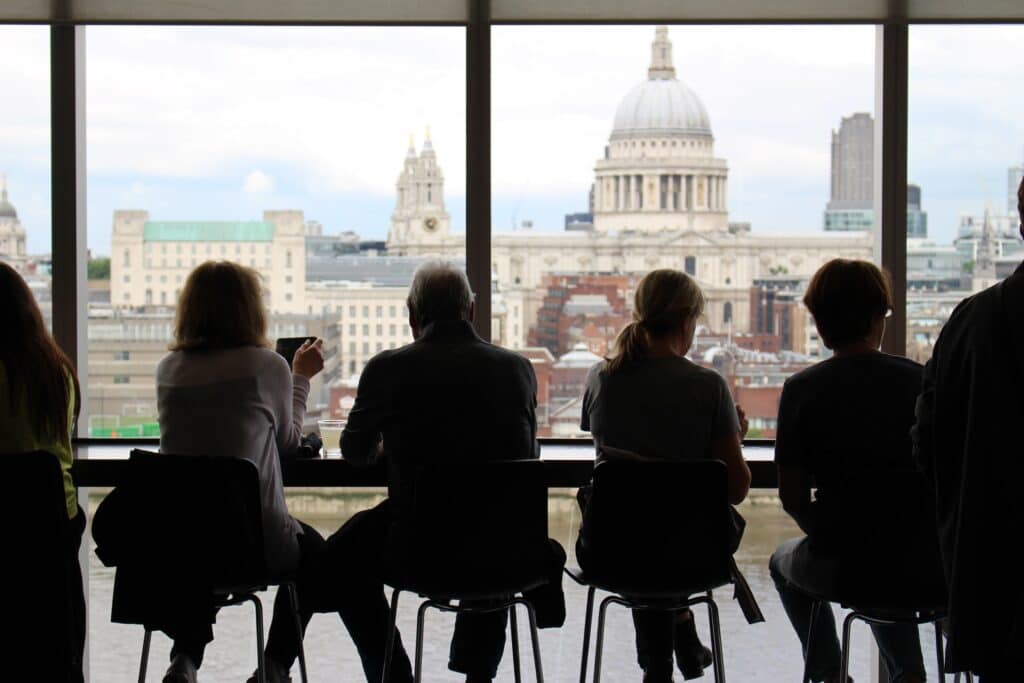March 15, 2022
Readers– As I write this, the people of Ukraine are fighting for their freedom, their independence, their place in this world. Humanity explores those very themes in the spaces that we call “museums.” I wish as a website that we were equipped to offer a sweeping series of insights to this crisis, tying in the messages embedded in the exhibits across Europe. Sadly, our skills in that regard fall short. But, I hope that what we offer helps you with your own processing of this horrible moment.
We’re ambitious about continuing to offer our readers a glimpse into museums of all kinds throughout Europe. To that end, we’ll be traveling through eight European countries, for eleven weeks, and visiting as many as 63 museums, for background work for this website. We hope to meet museum staff, learn more about how we can help link the interested tourist with each museum, and simply enjoy each location and share that enjoyment. Our travel dates are April 12, 2022, starting in Paris, and then touring counter-clockwise — from Paris to San Sebastian, Bilbao, Madrid, Grenada, and then Barcelona; across southern France through Monaco; throughout northern and central Italy including to Venice for the Biennale (not technically a museum, but significant and worth our time); through Switzerland and Austria; into Prague; then Berlin, Wolfsburg, Cologne, Trier, Aachen, and leaving finally from where we started– Paris.
You can follow the trip on Instagram @museumspotlighteurope.com. We’ll be posting news of new exhibits, practical tips on getting to the museums themselves, interviews with staff (staff, please return our emails!), and hopefully even brief videos featuring tourists as they describe their museum visits in “reel” time.
In the meantime, we won’t only be updating through Instagram. We’ll have new content on this website. Have you looked at our Exhibits At A Glance for a current calendar of special exhibits across Europe? How about our Spring and Summer Preview articles? We’ll be supplementing these articles with more news and overviews, as the spring and summer unfold.
Thanks for following us! You can contact me any time, at whitney@museumspotlighteurope.com. Maybe we can even say hi to one another during this trip!
— Whitney
Dear Readers– As promised, we’ve gotten back to work! You’ll find some exciting new postings to the site– Berlin, Rodin, and Giacometti are all subjects of fantastic articles. Our own recovery, though, like the pandemic recovery, has been by fits and starts. But we hope to keep offering fresh content as we move through the second half of the winter and into spring.
If you can’t get out to explore, I empathize!
“ For an interview with Mr. Gardner that also serves as a peek into the book itself, you might be interested in this interview that appeared in the Christian Science Monitor.”
I’ve recently read The Louvre: The Many Lives of the World’s Most Famous Museum, by art and architecture critic, James Gardner. For an interview with Mr. Gardner that also serves as a peek into the book itself, you might be interested in this interview that appeared in the Christian Science Monitor. (And yes, I know he authored “Culture or Trash?”, his critique on modern art!) Mr. Gardner’s book on the Louvre doesn’t include a photographic survey of the collection– for that, you might want to purchase The Louvre: The History, the Collections, the Architecture, written by Genevieve Bresc-Bautier, with photographs by Gerard Rondeau. It’s remarkable, but I could not have fully appreciated the photos had I not spent time with Mr. Gardner’s illuminating work. Budget permitting (and shelf space), you might consider purchasing them in tandem.
Stay safe, and please keep enjoying our site!
– Whitney

Dear Readers– Like so many other services, we were slowed to a crawl by the Covid-19 pandemic. And I’m kicking myself a little bit for letting that happen. Yes, our travel has been curtailed. But not our imaginations, and not our aspirations. Europe and its museums are still out there. Many museums have made themselves available through offering exciting digital ways to walk their halls. Many museums have extended or delayed their special exhibits, knowing that so many of us wanted a chance to enjoy those artworks in person. And now, slowly, some of the museums are beginning to reopen to visitors. Yes, there’s social distancing, appointments and reservations, other special rules, but even so, it’s great news that these cultural hosts are starting to stir to life.
And so too will we. We will get back to work, posting material that has been authored over the last several months. Our authors will be generating exciting new material for you to enjoy. We will do our best to stay one step ahead of the reopenings. We hope you will join us along the way!
-Whitney
Error: No feed with the ID 6 found.
Please go to the Instagram Feed settings page to create a feed.